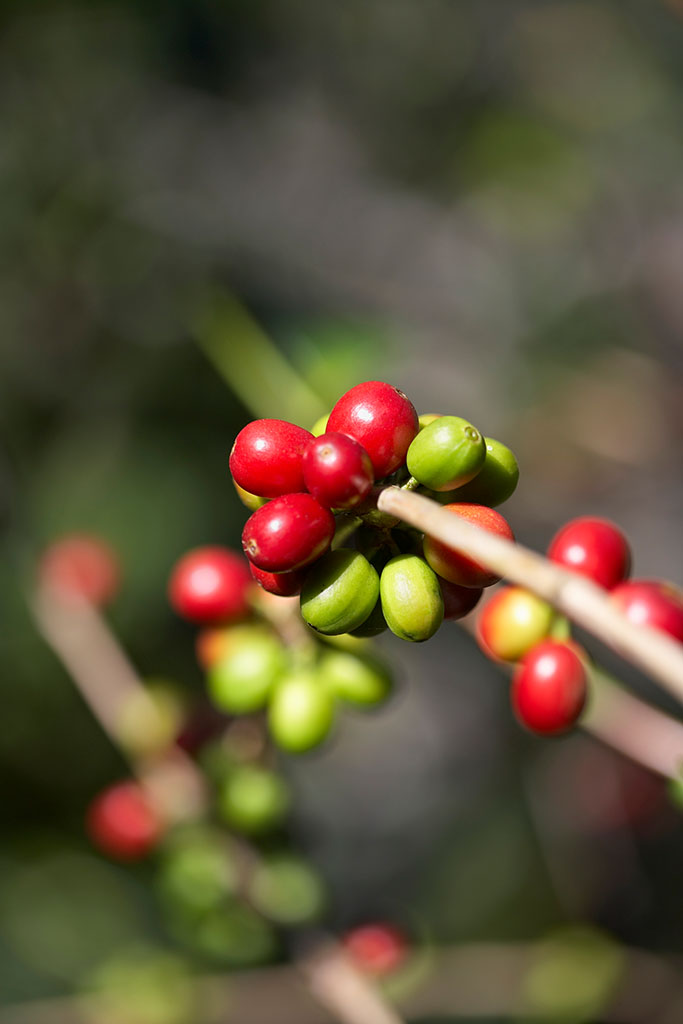A coffee estate where Indian coffee is very mild, strong and sour.
The term "fine coffee" was first put forward by Ms. Knudsen of the United States in Coffee and Tea magazine. At that time, Ms. Knudsen, as a coffee buyer of B.C. Ireland in San Francisco, was very dissatisfied with the neglect of the quality of raw coffee in the industry, and even some big roasters mixed a large amount of Robesda beans in the comprehensive beans, so she put forward the concept of fine coffee to advocate the improvement of the quality of the industry. This term is used to describe coffee beans with distinctive flavor characteristics that grow in a special environment. Its use in international coffee conferences makes it spread rapidly.
In fact, according to Ms. Knudsen, people started drinking fine coffee, but later, due to the growing demand for coffee, the discovery and use of new coffee varieties led to the decline of coffee quality. later, people even began to dislike this bad coffee and began to turn to other drinks. In this case, Ms. Knudsen re-made people realize the value of boutique coffee, which led to a boutique coffee boom. In the United States, there are enterprises and stores in pursuit of boutique coffee represented by Starbucks. The market for boutique coffee is also growing. In the 1990s, with the rapid increase of boutique coffee retailers and cafes, boutique coffee has become one of the fastest growing markets in the catering service industry, reaching $12.5 billion in the United States alone in 2007. Now boutique coffee has become the fastest growing coffee market. Coffee producing and importing countries around the world are aware of the great potential of the boutique coffee market, and continue to make efforts to the production and production of boutique coffee.
India (India) aroma 3.5 minutes brightness 4 minutes mellow 4 minutes flavor 4.5 points aftertaste 4 points
Suitable for baking: Full city/Espresso full city, if you want to get a thick flavor like dark chocolate, you can even enter the dense area of the second explosion!
The taste of Indian coffee is very mild, very low in intensity and acidity, with some spice and, of course, the common local flavor of Asian beans. India is usually used to blend into Espresso recipes. In fact, Indian beans taste like Sulawesi beans or Sumatra beans, but not that thick. Indian coffee does not sell well in the international market, and the main markets are in India. Indian beans treated in the sun are called Cherry, Arabica beans washed in water are called Plantation Arabica, and Robusta in water are called Parchment Robusta. In addition, rainy beans and aged beans increase the consistency of coffee and dark chocolate-flavored aged beans. Coffee beans have also begun to amaze coffee critics in India this year, most of which come from independent coffee farms.

Important Notice :
前街咖啡 FrontStreet Coffee has moved to new addredd:
FrontStreet Coffee Address: 315,Donghua East Road,GuangZhou
Tel:020 38364473
- Prev

Introduction of jasmine, lemon, peach, almond sweet and tea-scented Yejiachefi coffee beans
The so-called Yega Snow Flavor refers to strong aromas of jasmine, lemon, peach, almond and tea. The author's tasting experience has only one sentence: coffee entrance, flowers in full bloom! Just like a flower touches the comfort of taste buds and olfactory cells in the nasal cavity. In addition to the fragrance of the flowers, the delicate mellow thickness (body) is like silk massage in the mouth. Traditionally, Yega snow caffeine is the oldest.
- Next

The famous Rwandan coffee producing area manor, which is famous for washing and treating coffee beans, introduces the western province road of Kimmel Manor.
In 1999, 220 coffee growers formed guilds in the Malaba area (formerly part of Butare province) to address the disease. Among the guild members, many farmers were separated from their loved ones by the 1994 mass massacre, while some husbands were jailed or were taken to the traditional Gacaca Court (gacaca) to face trial on charges of participating in the massacre. They named the guild Abauza.
Related
- Does Rose Summer choose Blue, Green or Red? Detailed explanation of Rose Summer Coffee plots and Classification in Panamanian Jade Manor
- What is the difference between the origin, producing area, processing plant, cooperative and manor of coffee beans?
- How fine does the espresso powder fit? how to grind the espresso?
- Sca coffee roasting degree color card coffee roasting degree 8 roasting color values what do you mean?
- The practice of lattes: how to make lattes at home
- Introduction to Indonesian Fine Coffee beans-- Java Coffee producing area of Indonesian Arabica Coffee
- How much will the flavor of light and medium roasted rose summer be expressed? What baking level is rose summer suitable for?
- Introduction to the characteristics of washing, sun-drying or wet-planing coffee commonly used in Mantenin, Indonesia
- Price characteristics of Arabica Coffee Bean Starbucks introduction to Manning Coffee Bean Taste producing area Variety Manor
- What is the authentic Yega flavor? What are the flavor characteristics of the really excellent Yejasuffi coffee beans?

